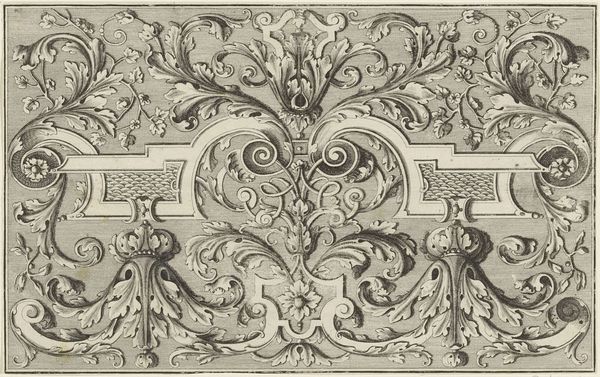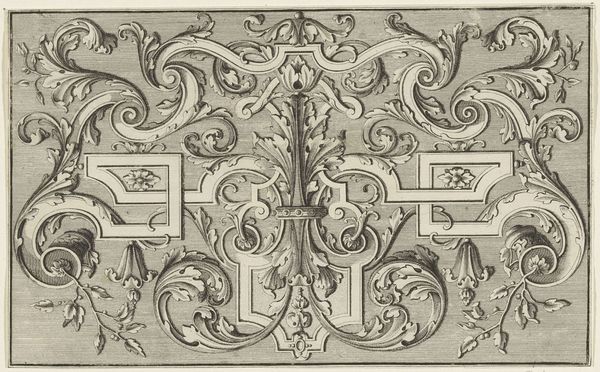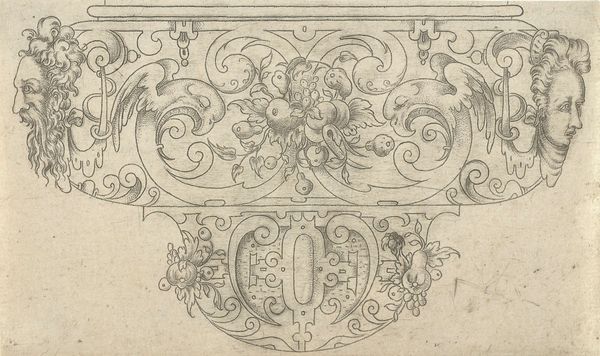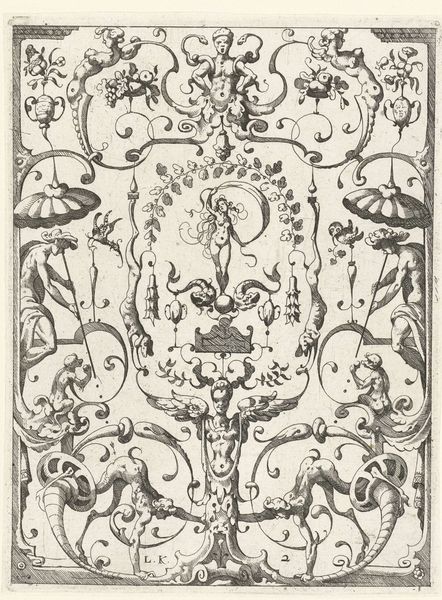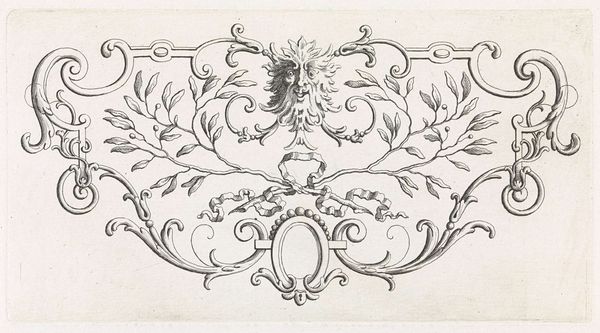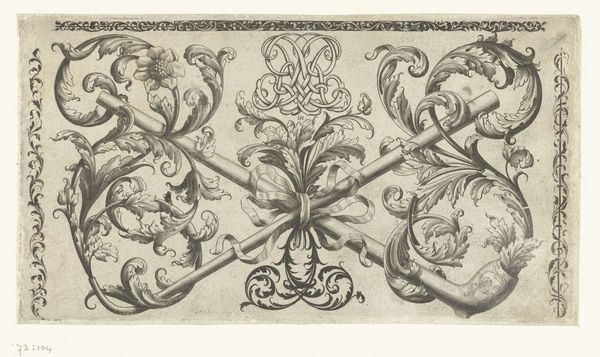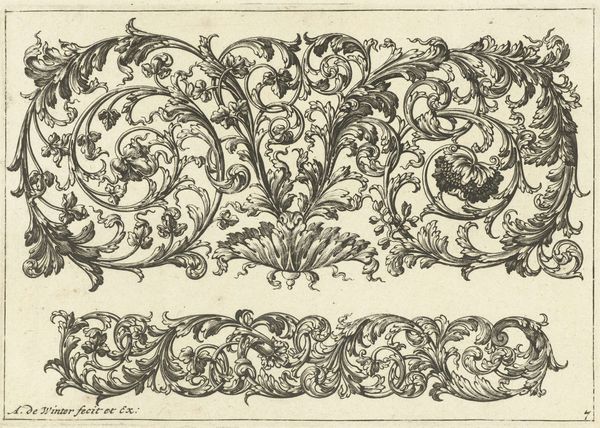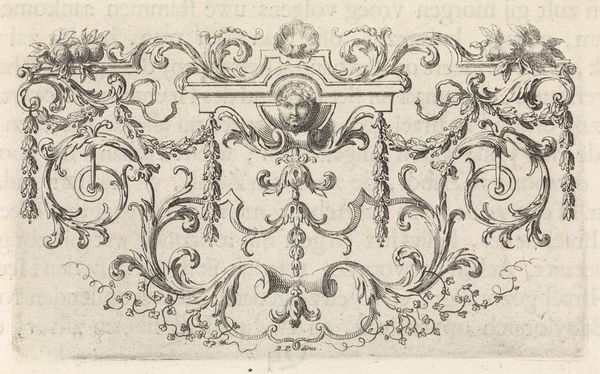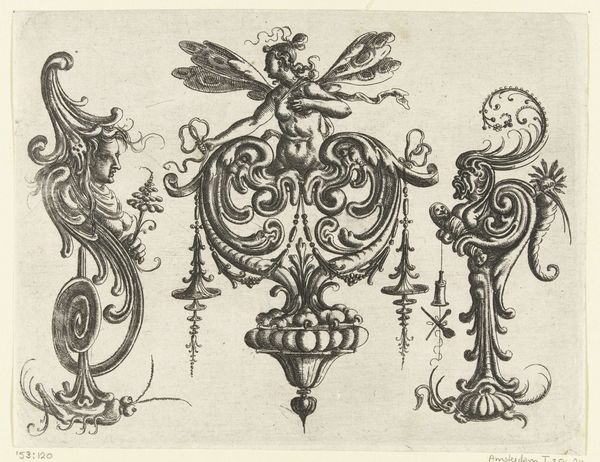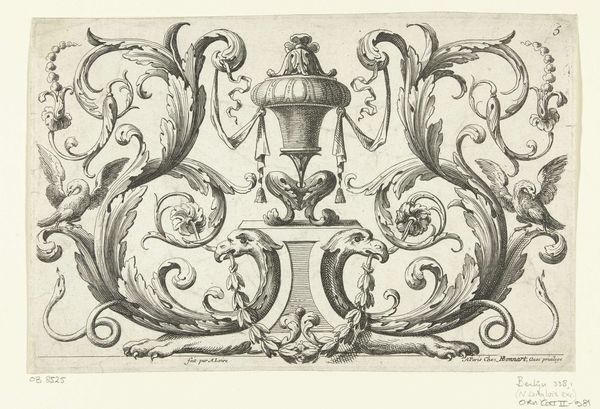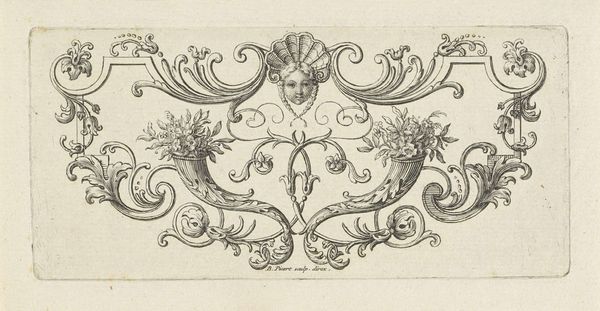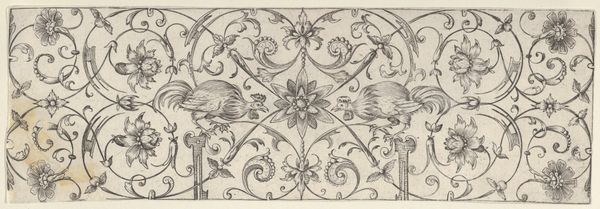
ornament, print, engraving
#
ornament
#
baroque
# print
#
old engraving style
#
ink line art
#
geometric
#
line
#
decorative-art
#
engraving
Dimensions: height 149 mm, width 232 mm
Copyright: Rijks Museum: Open Domain
Editor: This is a print called "Arabesken met acanthusbladeren," made sometime between 1726 and 1734. It's anonymous, found at the Rijksmuseum, and uses an engraving technique to create these intricate, swirling patterns. It strikes me as incredibly detailed for something that’s mass-produced, so I am curious – what stands out to you when you look at this piece? Curator: The repetitive use of the acanthus leaf is interesting when we consider the consumption habits of the time. These prints, due to their means of production, allowed for widespread access to fashionable designs, trickling down through various socioeconomic levels and spaces of production. We see a democratization of the baroque aesthetic. Editor: That makes me wonder about the engraver themselves. This is such skilled labor! Curator: Precisely. The creation of these engravings involves specialized labor. We must remember these prints are not autonomous creations. The engraver translates existing designs, acting as a conduit in the aesthetic supply chain. Editor: So it's not about individual artistic expression so much as skilled execution and replication? Curator: Yes, and we see the value not only in the artistic rendering but in the efficient production and circulation of style. How the design gets reproduced on other surfaces by artisans also plays a role in its ultimate destination. Editor: That is fascinating! It makes me appreciate the print as less of an end-product and more of a step in a much bigger material process. Thanks for that different perspective. Curator: My pleasure. Examining the context in which materials were made and used unlocks a deeper understanding.
Comments
No comments
Be the first to comment and join the conversation on the ultimate creative platform.
